Valparaiso University
Brauer Museum of Art
Jno Cook and Gordon Ligocki
![[Talking Head by Jno Cook]](bin/head.jpg)
I'm just saying - Jno Cook
![[Cruncher by Gordon Ligocki]](bin/gordy.jpg)
Gordon Ligocki - his work
curated by Linda Dorman and Tom Torluemke
May 13 2011 to August 7 2011
Required Artist Statement
I work with discarded machinery and materials.
end
![[]](cameras/bin/gravity.gif)
"Waiting for Armageddon: Gravity Monitor"
Normally static, but could be tripped by a change in gravity -- alarm will sound. Requires a 12 volt lead-acid car battery. Alarm may be set to latch "on," so that momentary lapses in gravity can be detected.
This device is part of a projected series of detectors and monitors (deluge, famine, pestilence, conflagration), all to be wired into a central "Second Coming Detector," and envisioned as a permanent installation which will support the ultimate concerns of global ecology. The remaining elements of the "Second Coming Detector" are not off the drawing board yet.
The original idea was suggested during an interview with Alan Cohen for a catalog for an exhibition at List Visual Arts Center. The question was, "What are you going to do now?" That is, after having built all those cameras.Thinking of a bowlingball I had placed on a 57 pound collimeter stand in the back yard, I suggested "Gravity Monitor." What I had in mind looked sort of like a mortar aimed at my nearest neighbor.The bowling ball remained in the final picture.
Constructed from a surveying tripod, a bowling ball, the balance arm of a platform scale, a car alarm, and assorted springs and wires. When gravity fails the ball releases the tension on a spring which sets off the alarm (electronics and springs are not effected by a lack of gravity).
HWD: 72 x 34 x 39" Reclaimed materials, 1990
![[]](cameras/bin/gorgon.gif)
"Turning Incoming Missiles to Stone"
(The Gorgon Projector)
Courtesy of Hamza Walker
This is an infinity-focus projection system (a collimated image), as a model for a proposed SDI weapons system project. Because the image is collimated, it remains the same size as one moves away from the projector, and stays at the same intensity.
Titled "The Gorgon Projector," it is meant to turn incoming missiles to stone. This project will require extensive testing and funding, probably at least $2 billion in Federal SDI funds.
I am currently using the head of a doll for an image, which doesn't
work (that is, it doesn't turn incoming missiles to stone, yet). I may
want to use a more effective image, perhaps the face of the SDI Architect
with snakes in his hair.
The case of a Navy sextant, parts of an aerial camera
lens collimated to infinity, the head of a doll, lamps, a blower, timer,
small DC motor for the eyes, which blink every minute.
WDW: 12 x 14 x 10" Reclaimed Materials, 1992
![[]](cameras/bin/evidence.gif)
"Evidence Against the Future: Children"
I have seen the population of the earth reach two billion, and have seen it go to four billion and five. Before we die we will probably see it go to 8 billion.
We have been born into a marked generation: it will be the only time in all of eternity that 90 percent of all human who have ever been born are alive at the same time. It may also be the generation which will forever destroy the earth.
These 10,000 images of children sitting on Santa's lap were originally
taken by some commercial venture. They were found as negatives on 35mm
color-negative stock and stored mostly on 100 foot reels. The negatives
cannot be dated or placed, they may be 20 years old -- it doesn't matter.
It is, at any rate, our generation, and more importantly, the next.
The negatives were edited to remove leaders and blank frames, and to
align all the images to a 4-perf cine format. A projection print was made of
the 700 foot negative. The complete showing takes 17 1/2 hours. A timer,
when pressed, shows about 5 minutes worth from the whole collection. The
projection equipment is a Navy surplus data recording camera; lens from a
1927 Kodak projector, placed on the inside; lamp housing and condenser
system from a slide projector, placed on the outside; mirror from a Polaroid
camera; reels are standard equipment; frame from Woolworth's; other stuff
from surplus outlets and hardware stores.
WHD: 31 x 15 x 20" 10,000 slides, Reclaimed Materials, 1990
![[]](cameras/bin/dummy.gif)
Mother Earth as a Young Woman
Got the dummy and the stand from Barney's of New York, to be decorated for some Christmas show window with a dozen other artists. I added the Xerox machine motor to have it rotate slowly toward the East. The map is actually marked in Dutch, but that has no bearing on the project.The anarexic dummy has the world map glued up everywhere, stretching topography somewhat, with the naval somewhere in the mid Atlantic (I know, the naval of the world is supposed to be at Malta) and Greenland on the right breast and Australia on the right buttock.
The original display featured a wreath of holly, with green soldiers woven in, and a necklace of small bombs. Originally titled "Protecting the Peace," I have removed both decorations, for no viewer ever noticed them, and the title also. We are left with "Mother Earth as a Young Woman."
![[]](cameras/bin/rottweil.gif)
"Rottweiler Camcorder"
Dog-mounted portable low resolution video camcorder. The dog is used here to model the reworked camcorder. The actual purpose was to record walks from a dog's perspective.
This was done, with the help of a battery-pack harness also worn by the dog. It was mostly footage which swings wildly back and forth between automobile hub caps and the fences in front of houses.
At some points the whole of the image is occluded by a crescent dog chin which covers the lens as he sniffs the ground, and an occasional long still image of tree branches. There are few other interesting points of view. The low resolution and slow scan rate of this camera makes the whole of the tape rather bizarre and difficult to view.
The dog was Zita Sir Puppy, a famous Rottweiler, frequently seen at art galleries, openings, and just about anywhere I went.
This is a Fisher-Price camcorder altered to be carried by a large dog. The video lens of the camcorder was removed and relocated to the side of the recorder, and the viewfinder and battery compartment were hacksawed off. Straps were added so the camera could be carried around the neck of a Rottweiler. A battery-pack was built to be carried on the dog's back. One videotape was made of a dog-walk; additional work awaits a solution to the jarring swagger of Rottweiler gait which blurs the video image.
HWD: 25.5 x 21.5 x 24" Video, Reclaimed Materials, 1990
![[]](cameras/bin/slack.gif)
"A Slackening of Creation"
The phrase is from Seneca or Ovid or Pliny. It struck me as very sad, and I have carried it around with me for many years. In 1990 I built a visual model descriptive of the thought.
This is a kinetic model of the Solar System, which condenses 30 billion years to three minutes, including the death of the sun, and the slowing and stopping of the earth's orbital and sidereal motions.
It starts up when a viewer is sensed. The lamp starts at 1000 watts, with the globe and arm spinning at high speed.
Over the next three minutes the lamp very slowly dims, the arm and
globe slow down. The globe stops spinning at about 2 1/2 minutes, the arm
stops revolving at about 2 3/4 minutes. The lamp goes completely out at
three minutes. Resets in 20 seconds.
Constructed from a surveying tripod, a one-thousand
watt lamp (rebuilt to fit a mogul base screw socket), and a 12 inch globe,
with the addition of various gears and bicycle chains, small motors
(including one from my VCR), and an altered Variac. Activated by means of
an ultrasonic intrusion alarm. The globe spins and rotates about the lamp
at a distance of about three feet, tilted at 23 degrees, and maintains the
proper orientation with respect to the stars in space.
HWD: 71 x 61 x 61" Reclaimed materials, 1990
![[]](cameras/bin/talkhead.gif)
Art History Lessons
Oct 28, 1994
JOEL LEIB
TEN IN ONE GALLERY
Dear Joel;
The piece is titled as follows:
"Readings from the Book" Jno Cook, 1993
HWD: 62 x 23 x 35" Reclaimed materials
Additional text by Ned Schwartz.
Courtesy of Beret International Gallery
Anecdotal description:
The original purpose was to build an oracle for art dealers. The design was to be like the talking brass skull of one of the Greek oracles of antiquity. Dealers could question the skull on how well certain pieces might sell, and would receive enlightening advice.
This piece mixes the overheard sales-pitches of contemporary dealers (collected by Ned Schwartz) with the pithy conclusions reached about art of the past by Jansen ("The History of Art"). The use of a book (especially THIS book) is important, in that the art community represents a "People of the Book," as defined by Mohammed.
The repeating tape which is "read" by the skull was produced on a computer, using a sound card (Sound Blaster). The jaw of the skull follows the audio track by using a DC motor which is fed a signal processed by an operational amplifier.
The text below was formatted for Sound Blaster. From Ned Schwartz. This is presented in four parts, after readings by the skull of the introductory paragraphs to the four major divisions of "The History of Art." The text collected by Ned, presented below, is spoken by the skull with ten-second delays between sentences.
I love it.
It is so sexy.
It is famous in Europe.
It has been X hibbitted at various New york gall e rees.
Major ma ga zines have reviewed this work.
It is being looked at by several mu Z ems.
Collectors are buying it and crating it.
In ten years this work will be extraordinarily valuable.
This work is pure genius.
This was the first person to create this style -- but many artists have stolen his techniques.
He works in this manner better than other artists who are trying to do the same thing.
No one has ever seen anything like this before.
This changes the way one thinks about art.
It requires tremendous skill to execute.
It really says a lot on several different levels.
It is very valuable.
People react very positively to it.
It is controversial to some people.
Some people may question if this is art.
It is perfect for a corporate environment.
It is scheduled to be shown at several exhibits.
It will be in museum shows next year.
The NEA has awarded several grants for this.
There is a commission from state government for one.
Several Universities want the artist as guest lecturer.
He used to teach in several art schools.
He was friends with many of the really famous artists.
He was responsible for the first commercial successes of De Kooning and Jasper Johns.
This is a pivital transition piece.
This is a major work.
This is the best of the entire series.
He never creates work this good anymore.
Art in America is planning a feature story.
The work is selling like crazy in Europe.
Other galleries are trying to steal him from me.
He could make a fortune if he wanted to sell out.
With the last show the work completely sold out before it came in the door.
There are several people making movies about him right now.
There was a show on PBS about this.
There was a huge color catalogue.
It is monumental art.
I can look at this for hours.
This is some of the greatest I have ever seen.
It is so good, it is scary.
Very few artists have ever accomplished this much.
This work will be prominant in HIstory.
![[]](cameras/bin/modelcar.jpg)
Getting Even
"Radio Controlled Car with Electric Drill and 16mm Gunnery Camera"
21" x 7" x 9" Roving Sculpture; with Remote radio control, Battery charger
On my street, on the same block, lives a man known to the neighbors as "Ice-pick Holly." He does not like other people's cars parked in front of his house. When I moved in I did not know this and on two occasions parked my truck in front of his house. The result in both instances was a punctured sidewall.
When I was told by neighbors that this was the result of parking in front of Holly's house I was furious. But there was nothing I could do about it, for no-one has ever seen him do it.
What I felt like doing was to blow out all four of the tires of his car. But Holly parks his car in front of his house at 6am each morning, driving it around from the garage in the alley, and at 6pm he drives it around to park it in the garage again. There is thus no chance to get even with him in the middle of the night.
I asked some of my kids to sneak down the block and puncture his tires. But Holly spends most of the summer days sitting on his front porch. And we also know that he carries a gun in his pocket. My kids were reluctant, even when I offered money.
My fantasy was to get even without being there. The "Radio Controlled Car with Electric Drill and 16mm Gunnery Camera" was the answer. The car is camouflaged with fallen tree leaves. It was meant to be launched from my location on the block and travel -- by radio control -- underneath other parked cars to Holly's house.
The electric motor on this radio controlled car has been changed to a low-speed high-torque gear-motor. The electric drill operates in the forward direction when the car moves forward, and reverses when the car reverses.
The Ni-Cad power pack adds traction to the rear wheels, and is able to supply a large amount of power for drilling. The Gunnery camera (not operating) is meant to get a record of the event. It operates from a separate radio control.
I haven't used it yet.
![[]](cameras/bin/closed.gif)
"Closed Environment"
The image was taken with a home-made rotating slit-shutter camera, which sweeps a full circle in 20 seconds, and repeats this until the film runs out. If loaded with 100 feet of film, it will go for 1-1/2 hours.
The aesthetics of this media is peculiar: it is a moving, projected image, and therefore there are viewer expectations of a narrative -- a sequence in time. But the camera does not record time in any sensible manner, it records space instead. The resulting "films" can be projected at any speed, and in either direction; they can be started in the middle, or presented as still images.
"Closed environment" mimics the senseless, aimless, and arbitrary method
of recording, which also describes the closed private environment found in
backyards. Nothing really happens.
Commercial display unit, altered to accept a 35mm film strip and to
operate at a very slow speed. The viewing aperture is 1 x 22 inches.
Backlighted with a fluorescent tube. The image moves to the left, 5.5" per
minute, and transits in 4 minutes. The transparency is a loop 150 inches
long, and repeats every 27 minutes.
HWD: 4.75 x 30 x 6" Reclaimed materials,1991
![[]](cameras/bin/cockroac.gif)
35mm Cockroach Camera, 1978
WHD: 8 x 7 1/2 x 7 1/4" Reclaimed materials
The construction has changed somewhat from what is shown, because a number of parts broke in transit and in use.
I used to sit in my kitchen and shoot roaches with an airgun loaded with half Q-tips -- if I missed a direct hit, the exploding cotton would get them. Built this camera for similar purposes, for if the roach misstepped he might get fried, since there is 120 volts across the sensing contacts.
A number of critics have expanded on this concept -- to where currently this camera "hunts down and executes cockroaches."
Eric Renner asked me if I could change the lens to a pinhole and take some pinhole-cockroach-pictures for an issue of Pinhole Journal. I obliged. The results were published in December of 1990.
Thus I have no images, but could supply the Pinhole Journal spread. If pressed I could set this up and catch a few roaches.
Cannot be exhibited under power, for the open wiring carries 450 volt DC, and 120 vac also.
![[]](cameras/bin/motordri.jpg)
"Half-frame Motordrive Camera" 1978
HWD: 9 x 10 x 4" Reclaimed Materials
My kids gave me this camera, and told me it didn't work anymore. Actually all that was wrong with it the thumbwheel film advance, it wouldn't stop between frames -- it would cock the shutter and set it off and go right on to the next frame. Rather than correct that fault, I decided to take advantage of it, and attached a small clock motor to the thumbwheel via some gears, and then a timer, and a charger for a flash unit. When I was done the camera would take one picture every hour. With thin based HP5 (which was available at the time) it would take 144 frames before running out of film -- that's about 6 days.
At first I photographed the doings at the kitchen table, then mounted above our bed -- which exactly filled the frame of the images. This went on for some months. I made slightly enlarged prints, in blocks. Also other versions.
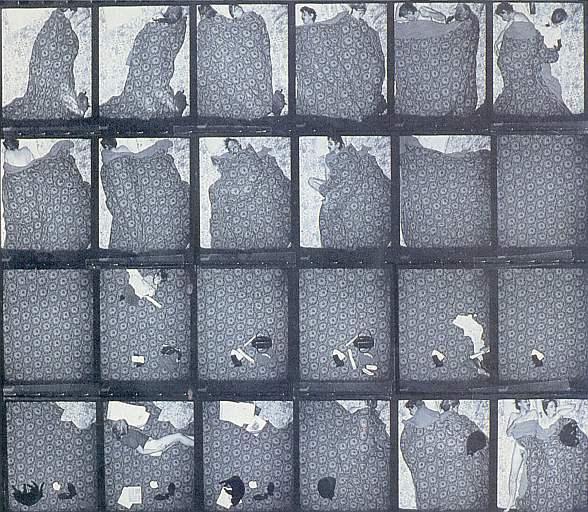
![[]](dust/bin/enter.jpg)
![[]](dust/bin/hump.jpg)
![[]](dust/bin/stopping.jpg)
"New Paintings" 2003
These are reproductions of road signs found all over the country, hand cut by local Highway Maintenance Departments. I have spotted them throughout the Midwest, and in Ohio, Tennessee, Texas, Texas, and Oregon. They are elements of a venacular aesthetic defining an Americana we live in and often do not recognize -- unique, funny, and at times impenetrable.
The warning message is not always clear. Often there are local attempts at improving the meaning, or at promoting a greater terseness. I tend to misread many of these signs as social and political statements ("Keep Left") and especially as sexual metaphors. What else can you do on road trips except entertain yourself?
HWD: 24 x 24 x 2" Masonite and paint.
![[]](other/bin/toast.jpg)
"Burnt Toast is Lost Bread" 1995
It seems every time I got a request for another contribution to some art benefit (it happens less frequently now) I get burned, especially if I set a minimum price. Randolph Street gallery used to kick 30 percent back to the artists, a reasonable fee for the trouble of framing and carting some piece of art.
The Ren was the worst. I donated the cookie-tin camera, with explicit instructions, but the people at the Ren let the damn thing go for $300, and never even bothered to let me know who it went to.
So with an invitation to a benefit for NAME gallery, I wanted to cover my losses. With this on my mind, Simon Cigielski and I were cleaning out the office at the GS Workshop (done once a year) when we happened upon a bunch of really nice printmaking papers which somebody had prepared with Brownprint solution, and never bothered to print. We could tell that the papers had been there for a while, cause the solution had started to turn.
The Brownprint solution application had been made with a gallant arched sweep accross the top of the papers, and more or less straight left, right, and bottom strokes. It looked like a slice of bread. My "getting ripped off as usual at art gallery benefits" problem suddenly had found a solution: give them something where my handywork would stand near zero, which had zero value, and which didn't even involve an image. Just give them the burned toast as a metaphor; burned toast is lost bread.
Simon and I cooked ("burned") the sheets of paper in a plate burner for 14 minutes, and processed them with great care. Two were framed for the NAME benefit. But there were no takers. It may have been the wrong crowd; not my crowd certainly. And at that point (in my "artistic career" -- as they say) everyone was expecting me to make machines. Rich Kelly of Tough expressed astonishment at my selection, but had no comment on my piece.
But these sheets of paper became my stock donation to subsequent benefits, and those subsequent benefits went better. At the Columbia College Art benefit one sheet of paper fetched $250. Another was donated to the Museum of Contemporary Photography after a faculty show.
There are one or two left yet. I like the non-image. But the word about my attitude must be out; I don't get asked to participate in art benefits anymore. That is what I get for releasing anecdotes about the piece.
![[]](resume/bin/he.jpg)
She didn't mean it.
"Continued Aesthetic Investigation"
When the National Endowment for the Arts was required to actually write down why they gave away money to artists (when they had been doing it for years for no apparent comprehensible reason), they elected to explain in their brochure that the money went for "continued aesthetic investigation."
I am all about that.
"Dysfunctual Toasters"
with Kirsten Daleske
a statement
![[]](toasters/bin/toast1.jpg) If the most important invention of the 20th century is the electrical
extension cord, the greatest aggravation is the appliance which refuses
to work correctly. This exhibition is a part of a continuing
investigation of the Machine Age.
If the most important invention of the 20th century is the electrical
extension cord, the greatest aggravation is the appliance which refuses
to work correctly. This exhibition is a part of a continuing
investigation of the Machine Age.
The exhibition includes 12 toasters which no longer work, because the machines have developed personality quirks which cause them to complain bitterly about making toast. Also a Mac Toaster, and a Flying Toaster Wall Saver.
The scope was limited to toasters because "toaster" is also a
simile among hackers for an appliance with an embedded chip which
performs only a single task, and nothing else. Certainly this is
our expectation in dealing with most people also.
OK, that is the official story... Read the unofficial story as a metaphor for all the screwed up people we have to deal with in life.
Dysfunctional Toasters follows from two earlier exhibitions, Dangerous Machinery, which included working machines dedicated to the purposes of critiquing aesthetics and art issues, and the exhibition NO CARRIER, which installed 16 operating computers eagerly debunking the hype of a digital revolution and the arcana of the Internet.
All the toasters have secret identities corresponding to friends and acquaintances. The scripts and substantiation of voices are by Kirsten Daleske, the pyrotechnics are by Jno Cook.
[Kirsten Daleske] studied zoology at the University of Illinois, and is currently styling hair in Portland, Oregon.
Welcome to the
Dysfunctional Toasters page
![[]](toasters/bin/toast5.jpg)
What the toasters are saying..
talking toasters
![[]](toasters/bin/cap1.gif) [aries]
rude, aggressive, pushy, a little whiny
[aries]
rude, aggressive, pushy, a little whiny
![[]](toasters/bin/cap2.gif) [taurus]
stubborn, literal, unimaginative
[taurus]
stubborn, literal, unimaginative
![[]](toasters/bin/cap3.gif) [gemini]
fickle, goes off in many directions at once
[gemini]
fickle, goes off in many directions at once
![[]](toasters/bin/cap4.gif) [cancer]
moody, possesive, conservative
[cancer]
moody, possesive, conservative
![[]](toasters/bin/cap5.gif) [leo]
arrogant, proud, self-centered
[leo]
arrogant, proud, self-centered
![[]](toasters/bin/cap6.gif) [virgo]
picky, bitchy
[virgo]
picky, bitchy
![[]](toasters/bin/cap7.gif) [libra]
wishy-washy, can't make decisions
[libra]
wishy-washy, can't make decisions
![[]](toasters/bin/cap8.gif) [scorpio]
vindictive, vengeful, jealous
[scorpio]
vindictive, vengeful, jealous
![[]](toasters/bin/cap9.gif) [sagittarius]
dislikes routine and constraints
[sagittarius]
dislikes routine and constraints
![[]](toasters/bin/cap10.gif) [capricorn]
plodding, dull, unfeeling
[capricorn]
plodding, dull, unfeeling
![[]](toasters/bin/cap11.gif) [aquarius]
spacy, out in left field
[aquarius]
spacy, out in left field
![[]](toasters/bin/cap12.gif) [pisces]
easily hurt, emotional, crushed by adversity
[pisces]
easily hurt, emotional, crushed by adversity
![[]](toasters/bin/toast7.jpg)
"You've got Toast"
Toaster images by Gabriella Scalpone, and Leah Abrahams.
Squirrel with toast from "Squirrels on Parade" September - December
1999, Suitable Gallery, Chicago,

"A House Spider"
1983, I'll have to look for some images. Used to have anecdotal text, courtesy of my neighbors.

"Reflections on the Future"
The future is here represented by one hundred and sixty doll heads in assorted household jars (Mayo, Peanut Butter, Fruit juice), and connected to each other with 450 feet of clear plastic tubing, two or three connections from the lid of each jar. All the lids, of course, are beige. On the floor.
This is representational of the whole of the internet, an organic comedy of connectivety, and conservatively a mirror of the future, when everyone will be connected. It reiterates the net's anarchy at the physical level.
"Diagrams" 2000
April 2000
Some are diagrams for constructions, installations, exhibitions, film scripts, mechanical devices, the triangulation of the sun, the geometry of projections, the modulations of whatever. Some of these explain the workings of the universe to children, some do the same to myself.
First 100 (38) Diagrams










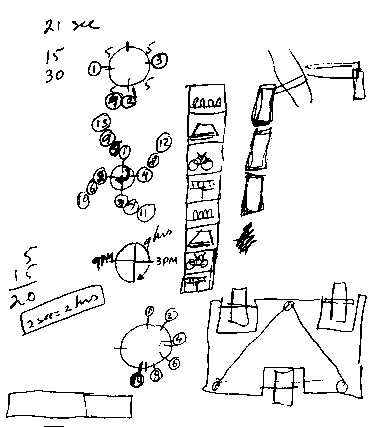

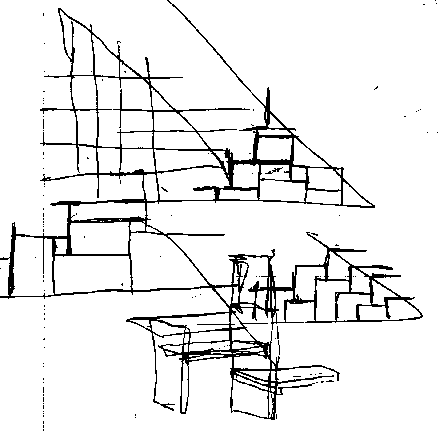
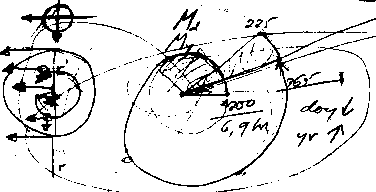

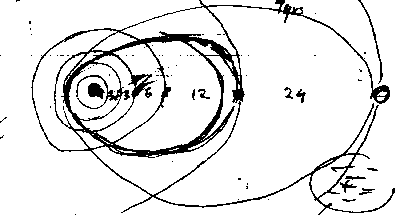
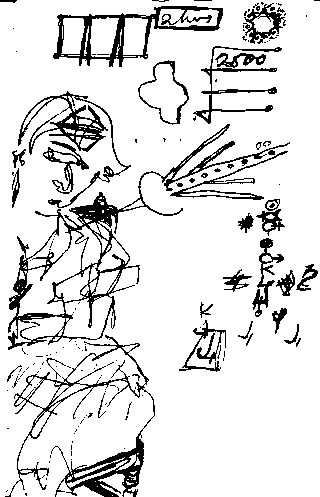
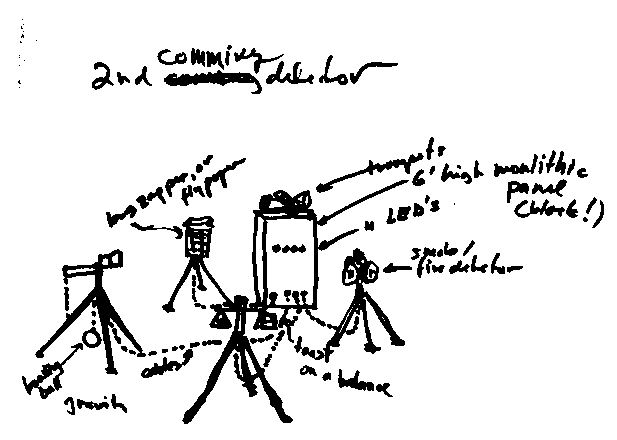


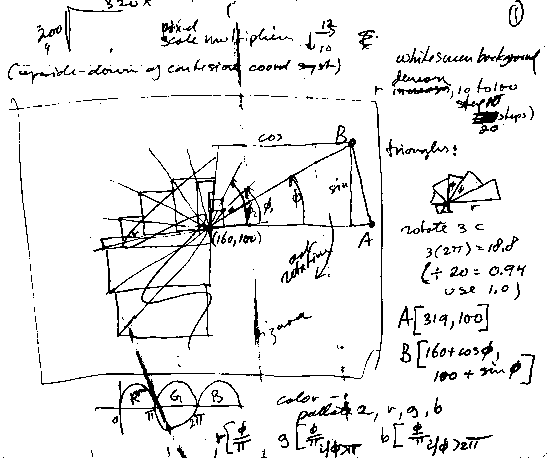

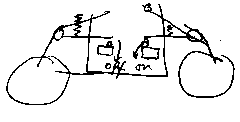

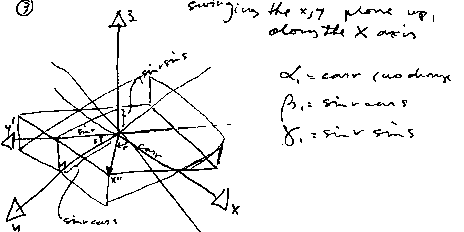

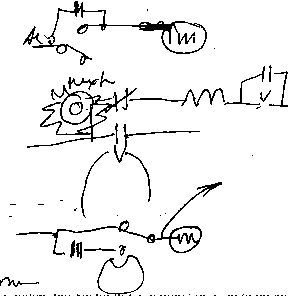
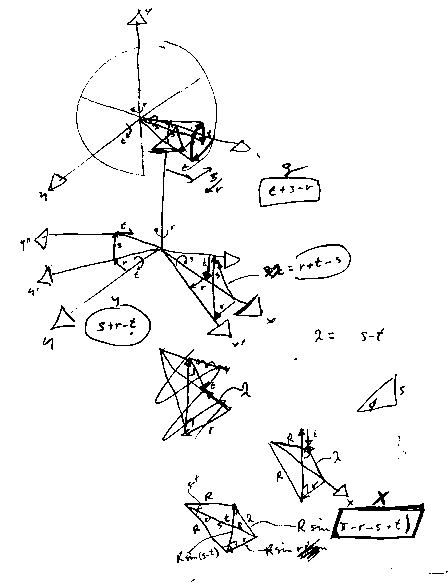
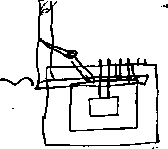
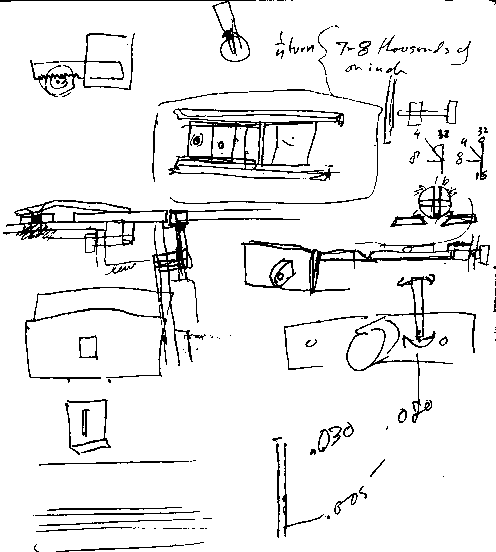
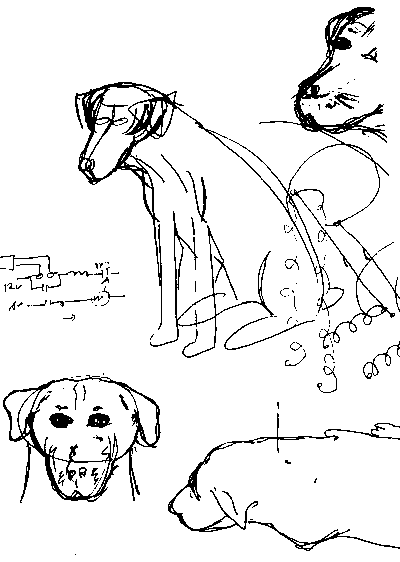
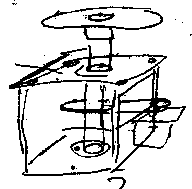
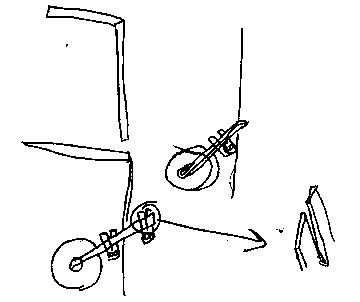
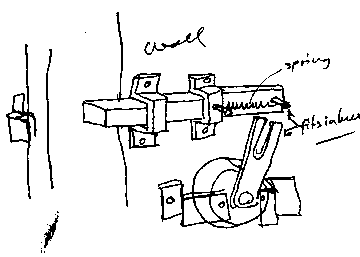

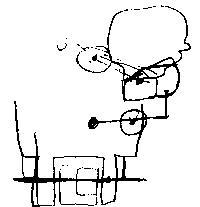
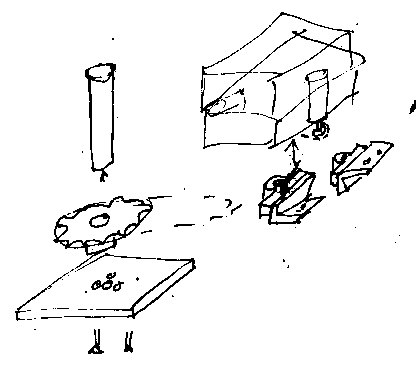

Recovering the Lost World,
A Saturnian Cosmology -- Jno Cook
(excerpted from Chapter 1)
"... a large planet stood above the North
Pole
for a very long time."
That fact is certain; and that is what this site is about.
The planet Saturn moved on a wildly elliptical path around the Sun in the remote past, entering the Solar System at very long intervals. Some time in the last 6 to 3 million years, perhaps after passing close to Jupiter, Saturn was placed in a much closer orbit around the Sun, very near Earth. From about 9000 BC, Saturn captured and held the Earth in a sub-polar position until 3100 BC, when Earth broke away.
------------
I never meant to write as much as I did. But I could not ever stop, since some readers were rescued from oblivion and eternal damnation. Some responses are listed below.
- "Reading your Saturnian stuff ... awesome." -- e boettger
- "I am overwhelmed by the scale and breath of your ideas and writings." -- d levie
- "... absolutely revolutionary." -- c george
- "Very impressive; your site is one of the more accessible rundowns for the layman of Saturnism." -- w radtke
- "I am very impressed with your scholarship and the way you have synthesized various areas." -- d smith
- "Love your site, I've read everything on it that I could." -- j robillard
- "Found it quite profound ... a big part of what I am looking for." -- a flanagan
- "Fantastic. You have pulled together so many things." -- j brookes
- "My appreciation at the sterling work you have done." -- s borruso
- "Absolutely fascinating and a masterpiece; when I came across your site my jaw slowly started dropping." -- r houston
- "I was AMAZED. It is awesome." -- h george
- "Fantastic site ... sweeping in scope." -- EU blog fan
- "... a feeling ... of finally coming home." -- h pluut
- "I am totally amazed and awed." -- m signatur
- "I admire your extensive and expansive research." -- h postma
- "... a far cry better than some of the so-called 'legitimate' research out there. It is a shame more people cannot see what is staring them in the face." -- d perkins
- "The scenario you have laid out answers many questions I have had for years and the way you present it is very comprehensible." -- d de santis
- "This is truly an eye opener." -- j dionne
- "If you are right then everything we know so far about human history is wrong." -- r boerman
- "... reads like one of those can't-put-it-down pageturners." -- j smith
- "The best and most complete i've seen." -- p mitronikas
- "Everything you want to know about Saturn and it's myth, go to Jno Cook. This guy is twenty years ahead of everybody. ...take a peek regularly at this mind-blowing site." -- dodeca at a blog
- "The best synthesis I have read." -- sinner at a blog
- "I love your site; your work is amazing." -- r adams
- "I'm struck by the magnitude of your thinking." -- e dawson
- "... probably the most comprehensive coverage ... pertaining to the history of Mankind." -- l pronko
- "This is BIG stuff you're doing. ...feeling like I'm finally connecting to reality." -- n rothstein
It turned into 690,000 words, the equivalent of 1500 pages.
![[]](./bin/ylinux.gif)
Website Provider: Outflux.net,
URL:http://jnocook.net/valpo.htm
![[]](cameras/bin/ailogo.gif)